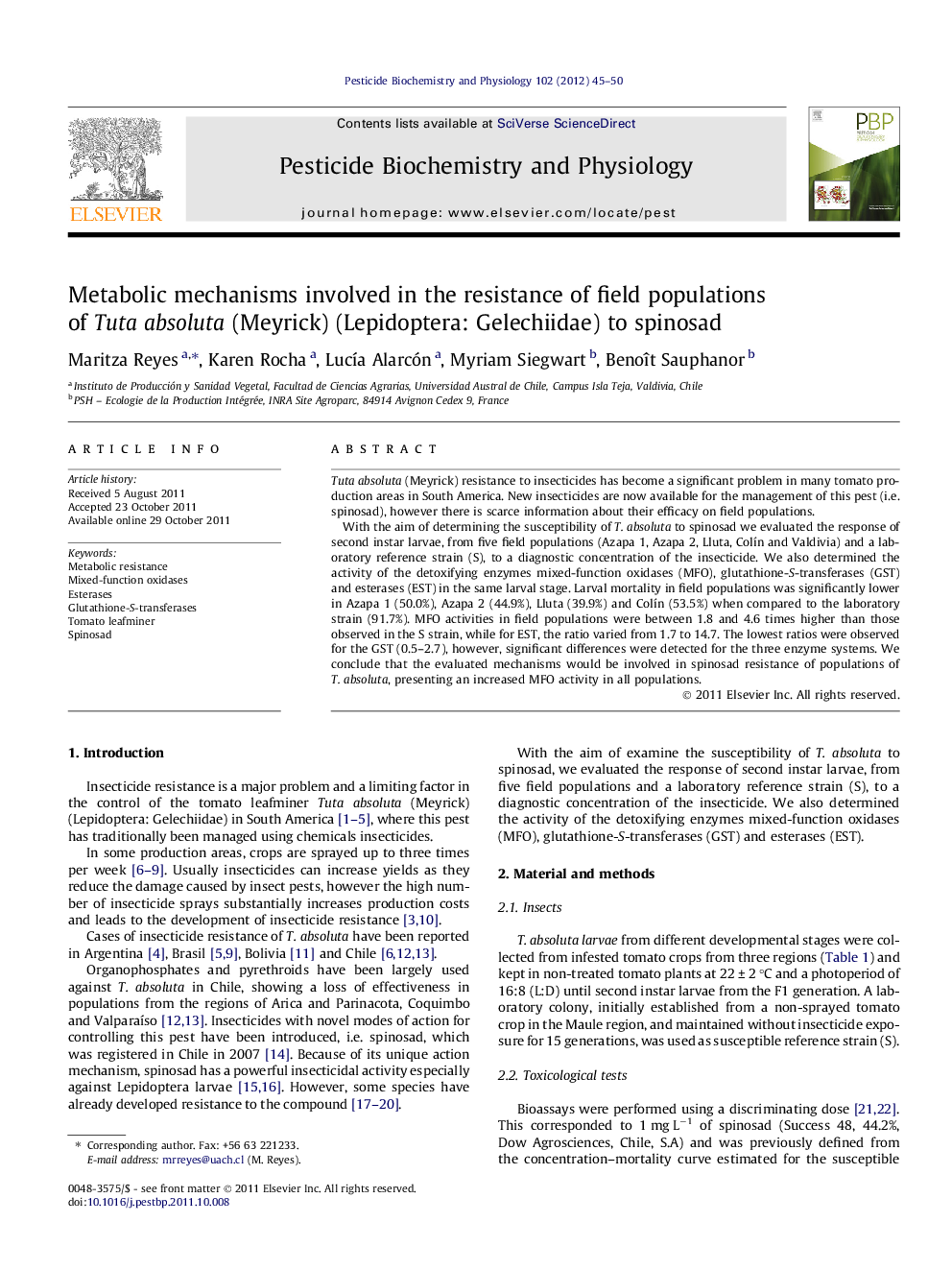| Article ID | Journal | Published Year | Pages | File Type |
|---|---|---|---|---|
| 2009677 | Pesticide Biochemistry and Physiology | 2012 | 6 Pages |
Tuta absoluta (Meyrick) resistance to insecticides has become a significant problem in many tomato production areas in South America. New insecticides are now available for the management of this pest (i.e. spinosad), however there is scarce information about their efficacy on field populations.With the aim of determining the susceptibility of T. absoluta to spinosad we evaluated the response of second instar larvae, from five field populations (Azapa 1, Azapa 2, Lluta, Colín and Valdivia) and a laboratory reference strain (S), to a diagnostic concentration of the insecticide. We also determined the activity of the detoxifying enzymes mixed-function oxidases (MFO), glutathione-S-transferases (GST) and esterases (EST) in the same larval stage. Larval mortality in field populations was significantly lower in Azapa 1 (50.0%), Azapa 2 (44.9%), Lluta (39.9%) and Colín (53.5%) when compared to the laboratory strain (91.7%). MFO activities in field populations were between 1.8 and 4.6 times higher than those observed in the S strain, while for EST, the ratio varied from 1.7 to 14.7. The lowest ratios were observed for the GST (0.5–2.7), however, significant differences were detected for the three enzyme systems. We conclude that the evaluated mechanisms would be involved in spinosad resistance of populations of T. absoluta, presenting an increased MFO activity in all populations.
Graphical abstractMost of the individuals of the reference strain expressed values lower than 50 pg of 7-OH insect−1 min−1, while in the field populations the contrary is observed. This is associated with the inefficacy of spinosad.Figure optionsDownload full-size imageDownload as PowerPoint slideHighlights► Reduced susceptibility to spinosad in field populations of Tuta absoluta in Chile. ► Increased mixed function oxidases activity was the most frequent metabolic resistance mechanism, followed by esterases. ► Resistance levels are related to the selection pressure.
